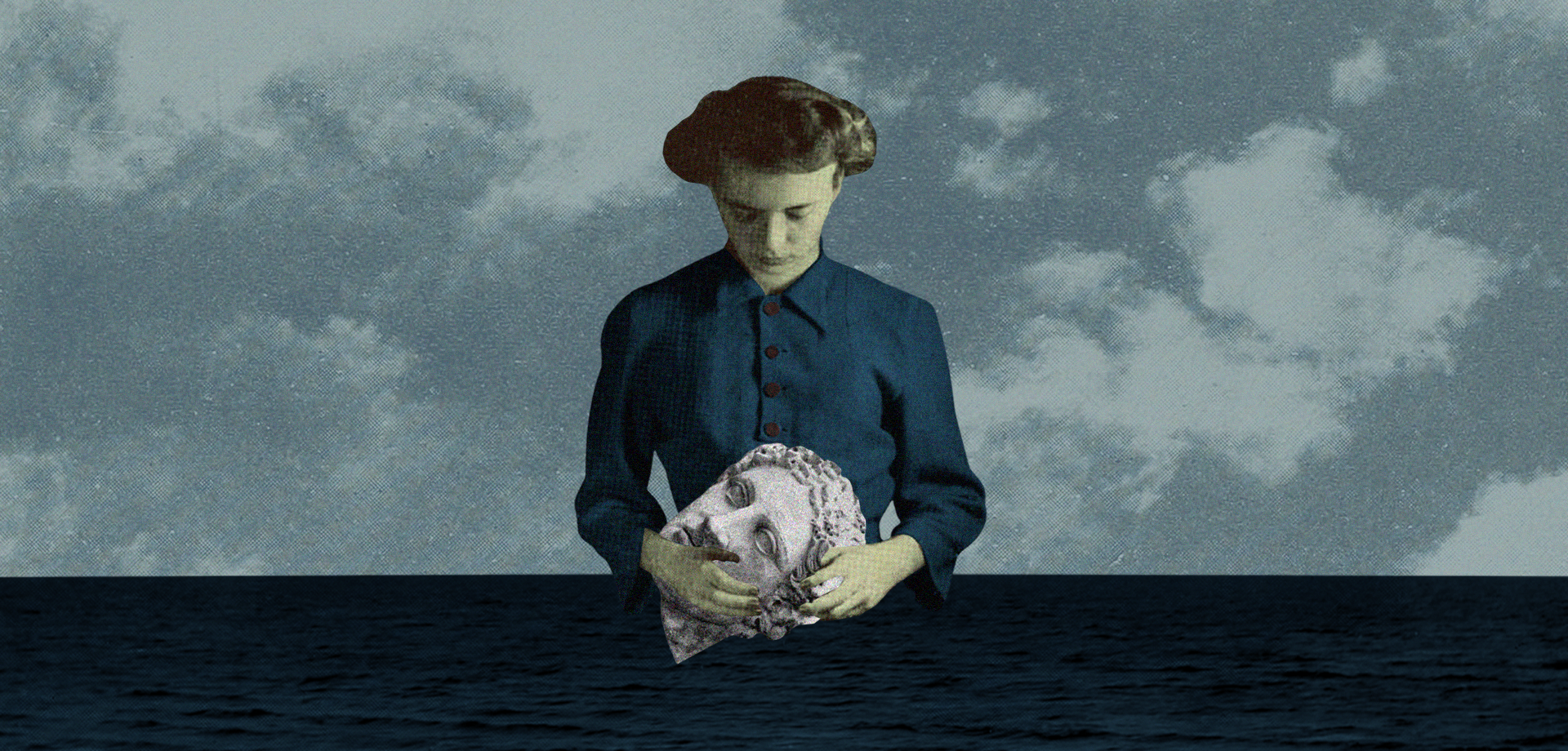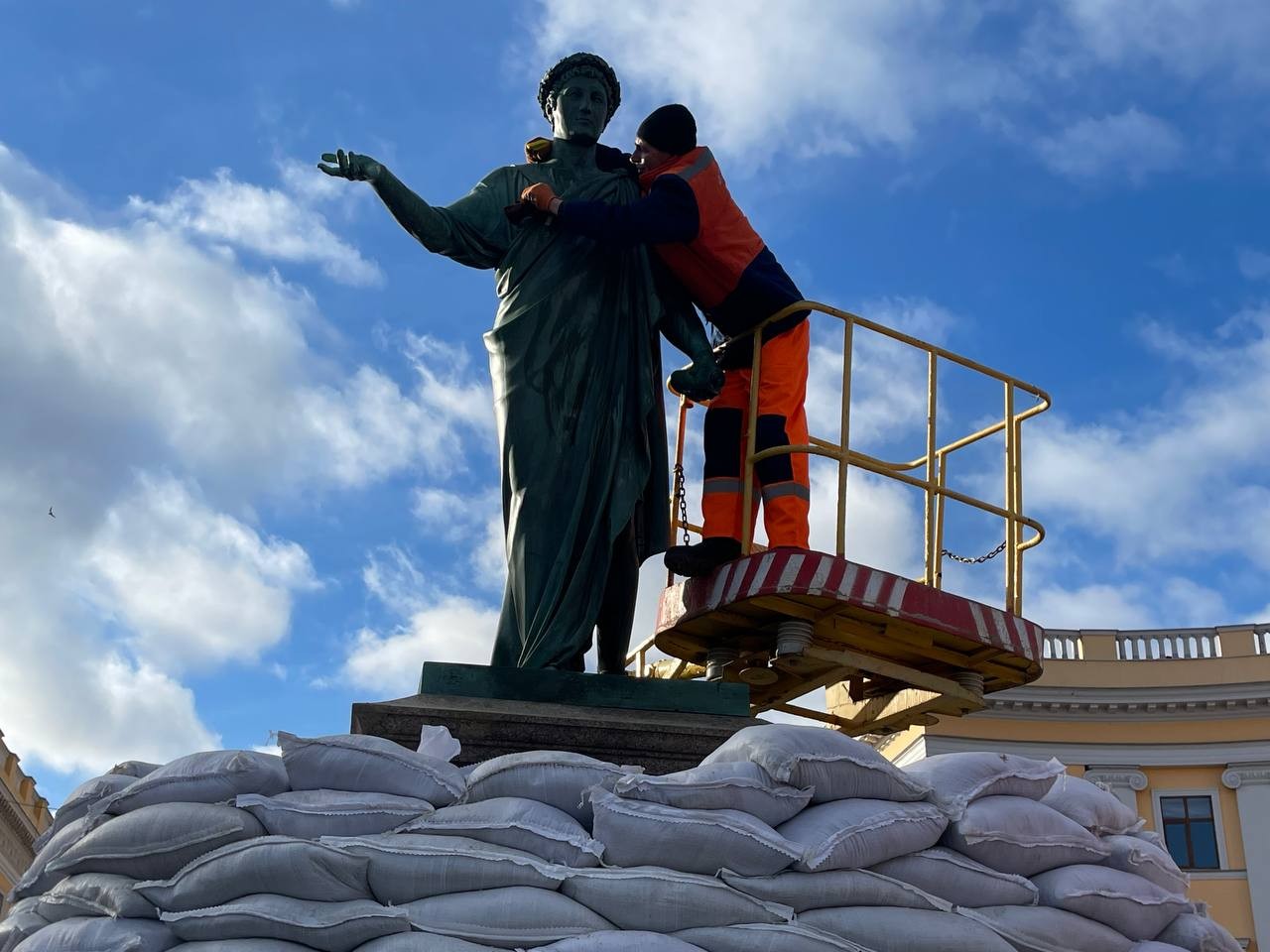
Richelieu’s Odesa statue and Simone Weil: it’s all about care
Power is often seen as coercive and dangerous, while care is viewed as inherently “moral” and nurturing. Yet in periods of violence and crisis, care and power are not necessarily opposites but can be deeply entangled. This essay delves on some life-defining choices made by people during World War II or Soviet terror. It explores the twists and turns of the human mind when confronted with radical choices — also in today’s world. It helps us see how care is both an intimate social bond and a serious commitment — to people, places, and ideals.
Care has a good name. Power, less so. If power can be moral sometimes (as in social security), care is ontologically so. On the accounts of Hobbes, Nietzsche, Freud, Gramsci, Foucault, and probably many, if not most, scholars today, the will to power determines most human actions, even — or especially — the most benign (for Foucault, even hospitals were about power). Apparently, power is everywhere and explains everything. Marshall Sahlins derided this meta-theory as “Leviathanology”; Eva Illouz as “powerism.” Yet, in many minds, power is conflated with force, might, oppression, a source of danger: the opposite of care. In this intellectual tradition, the state is the paradigmatic expression of power: anonymous, pitiless, scary.
If care and power are to be considered in the same reflection, three main hypothetical situations present themselves: power against care; power as care; or, in some uncanny rejoinder, care-as-power against power-as-might. I will focus on the latter. For powerlessness (a wounded soldier, for example) to be cared for and protected from power-as-might, care itself should yield some power. A nurse can tend to the wounded soldier only if the field hospital is protected by top-notch anti-aircraft batteries. In this essay, I will rumble over two expressions of care: care as an interpersonal relationship, and care between humans and material entities. Each time, care is a response to power. Therefore, I take power and care as liminalities. Care is a moment: as when an extraordinary situation moves an individual to take risks in order to save, rescue, or tend to a vulnerable subject. That is, behaviors are studied within a larger event that puts pre-existing relationships to a test. If a nurse treats a patient in peacetime, the circumstances do not include power-as-might. Violent liminality, on the other hand, puts social obligations to a test.
Care is a social relation. A nurse tending to a wounded soldier places two individuals in deeply asymmetric positions, one dependent on the other to heal or even survive; it is a social relation between selflessness and fragility. However, the wounded soldier had to be tended to by fellow soldiers in the first place. Few wounded combatants are brought straight from the front line to an infirmary or a field hospital without, first, the care of — and risks taken by — their comrades. War is a strange combination of violence and care, especially when people who are not used to performing either in ordinary times now perform both within seconds. Few places are as social as a combat trench. Dozens of soldiers spend days, sometimes weeks together, talking, sharing food, nurturing bonds. As sociologist Siniša Malešević has shown, warfare is about sociality. But the nurse’s motives and those of fellow soldiers are distinctly different. The nurse oftentimes does not know the wounded soldier, at least not at first; they are moved by morality, empathy, duty. The fellow soldiers are moved by pre-existing relationships; their action can be classified as moral, but morality is more a result than a determinant.
We all know people can act morally with strangers, help the vulnerable escape, survive, heal. But what happens when the vulnerable person is not a stranger? What happens when mass violence and hatred enter a neighborhood, a community, a group of friends, a family, a couple? Do social bonds still hold when some belong to the perpetrating group and others to the targeted one? Who cares for whom — or who for no one?
When violence is perpetrated by armies on the battlefield, the enemy is anonymous. When violence engulfs civilians who know one another, bonds are tested. The Rwanda genocide comes to mind, but there are many other examples of this.
Luise Solmitz (1889-1973) was an enthusiastic Nazi supporter. In 1933 she even denounced her own brother to the authorities because he was a Liberal. Throughout the Nazi era, Solmitz, a schoolteacher in Hamburg, kept a 700-page diary, recording her observations and feelings. She fell early for the Nazi pomp and propaganda. During a Nazi march she witnessed in Hamburg in 1932, she experienced an almost epiphanic moment: “They sang ‘The Republic is shit’ … and ‘The murderous Reds have bloody hands...,” and this enthralled her. Of the Anschluss, she wrote “it’s all like a dream.” Germany’s military victories strengthened her admiration and faith in Hitler.
Her husband was Jewish. As early as 1933, the pressures on the couple grew steadily. Nazi officials entered their apartment on several occasions that year, making threats against him. Their circles of friends shrank, as non-Jews were prohibited by the 1935 Nuremberg laws from any socializing with Jews. In Nazi Germany itself, care, attention and social niceties became gradually forbidden if given to members of “illegitimate” groups. Not just sexual relations (“race defilement”) were forbidden, friendships too. So, Luise Solmitz became friendless because of her husband. In addition, following the Nazi taxonomic system, their daughter was classified as “mixed race of the first degree”, which prevented her from marrying an “ethnic German”. To care, in these conditions, was heroic. Yet, throughout the war, Luise did what had to be done to save her husband. Had she left or divorced him, he would have fallen out of the category of “privileged Jews” (who were deported only in the last weeks of the war) and would likely have been deported immediately. She steadily cared for him. And yet, even after her husband endured humiliation after humiliation, her admiration for Hitler continued. The dissonance between the appeal of Nazism and the strength of her matrimonial bond may be what strikes the reader. But she never wavered. Intimacy trumped ideology, care trumped power.
The behavior of the French literary theorist Maurice Blanchot also exemplifies the primacy of bonds over hatred. Before becoming a self-righteous moralist after 1945, correctly banking on the public’s short memory, Blanchot had been a virulent antisemite and an admirer of authoritarianism. He authored hateful antisemitic articles in the collaborationist press throughout the war. Blanchot also saved Emmanuel Lévinas’s family by hiding them during the Nazi occupation. Lévinas, a Jew born in Lithuania, would later become a prominent philosopher. He and Blanchot had first met at the university of Strasbourg in the 1920s when both were philosophy students. They developed a friendship. That friendship weighed more than Blanchot’s ideology.
What is a social bond made of to make it weather liminality, hatred, external pressure? What cognitive mechanism is triggered by sociality to make both sides of a dyad forgo beliefs and sometimes group loyalty or group identity (think of Romeo and Juliet)? While anthropology and sociology have produced vast archives on sociality, there are few explorations and definitions of what a relationship is and consists of. Several memorialists and scholars pointed at this contradiction during the Rwanda genocide: some young genocidal Hutus would go on their killing operations during the day before returning to their homes in the evening to care for the Tutsi friends they were hiding.
There are, of course, social relationships and couples that collapse under external political pressure. Robert Gellately tells the story of a Gentile-Jewish couple, both doctors, with five children in a small rural town. The social smothering of Nazi laws led to this couple’s breakdown. The build-up of government pressures eventually broke the marital bond and the ethnic German husband left his Jewish wife. (As long as a Jewish spouse remained with their ethnic German spouse, they were relatively safe from deportation.) This woman was eventually arrested and deported to Auschwitz where she was murdered.
A more famous case is that of Vyacheslav Molotov (1890–1986), Stalin’s foreign minister, and his wife, Paulina Zhemchuzhina (1897–1970). They had been married for 28 years when, in 1948, the MGB (the KGB’s predecessor) arrested her and sent her to a forced labor camp where she remained until 1954. All along, Molotov was Stalin’s minister, and powerful. He could have used his power to rescue his wife. He chose not to, probably out of fear — or, to put it more harshly, he chose safety over duty. When she was released, after Stalin’s death, they resumed their marital life. Categorized as an enemy in the cast-iron classification system of the regime, Zhemchuzhina did not receive care from her husband. She remained an identity (enemy) defined by power, not a spouse.
The fascist sympathizer Eugène Schueller, on the other hand, used his power to save his employee, Efrayim Kahneman. Schueller was a successful French entrepreneur who founded the cosmetics firm L’Oréal. During the German occupation of France, Schueller kept deep and useful networks with the authorities, for he was himself on the far right and had in the 1930s been a member of La Cagoule, an underground fascist and terrorist organization. Kahneman was his head of research at the L’Oréal factory. Their bond was probably hierarchical, but still. When Kahneman was arrested by the French police during the Vel d'Hiv mass arrest of Jews in July 1942, Schueller intervened to have him released and escape certain death.
The human brain, intuitively or not, tends to mentally organize information. Humans — in all cultures, believed Lévi-Strauss, but cognitive science today argues as much — classify people and things, finding a slot for every piece of information, people and objects. A bond may be the only situation that makes us escape our systematic and unconscious reliance on taxonomies. To put it more simply, when we see a friend or a spouse, we do not see an identity or a social construct. Hatred, bias, resentments, on the other hand, demand not only allegiance but reliance on classifications and constructions. The latter have to be abolished or at least relativized for humans to care for each other across ethnic, religious and political borders. Totalitarian systems understood this phenomenon: to rule, they knew they had to crush human bonds — or, as Arendt put it, atomize society.
A bond is not a social construction, nor a slot in xenology, but something so close that social science struggles to grasp the mystery and define it.
* * *
What if care were neither intimate nor a social relation but a more abstract one, such as a relation between a person and a thing? Can one care for something material? In Venice Saved, a play published decades after her death, the French philosopher Simone Weil imagined a group of mercenaries hired by the Spanish Crown to carry out a coup in Venice in 1618. To succeed, they had to destroy the city. However, their leader, Jaffier, soon after secretly arriving in Venice, fell in love with the city’s beauty. The play is a reflection on heritage, love and beauty, and on how the three are linked to fragility. It is about the link that triggers pity, anxiety and eventually action. The vulnerability of Venice’s beauty moved Jaffier to do the unthinkable for someone of his condition: he decided to betray his own men, he denounced the conspiracy, and saved Venice. His men, who trusted him, were tortured and executed in front of him.
The English language distinguishes between to care for and to care about, and sometimes the two can be conflated. Can one care for an identity, a heritage, a culture? People care about these things, but can they care for it — can they tend to it? Beauty, for Simone Weil, is vulnerable and vulnerability requires care, obsessive care, even sacrifice. Jaffier’s choice is not between good and evil, as in children’s books, but, as the literary critic Léo Texier put it, between evil and despair. Yet, Venice Saved is also a story of anthropological extinction averted — an anti-Carthage. Simone Weil’s reflection is not only about the vulnerability of beauty and the feeling of love — in this case, love for a city — it is also about heritage as enrooted and fragile. For Weil, to protect heritage and roots is a moral duty, while that which threatens beauty, fragility and the enrooted heritage, is evil.
The current situation of the bronze yet fragile statue of the Duke of Richelieu in the center of Odesa offers an interesting parallel. In March 2022, at the beginning of the full-scale war, citizens and the authorities erected walls of sandbags around the statue. Richelieu, who once stood for power and the mighty state, now depends on the care of others to survive as a statue. This is, of course, true for all of Ukraine’s heritage today. In the face of power — and what is more paradigmatic of power than a pitiless invasion — care has been an instinctive collective response.

What educates us about care and power is less the similarity between the hypothetical wounded soldier mentioned at the beginning of this essay and the bronze Duke of Richelieu, than the parallel between the caring nurse and the anonymous citizens who installed the sandbags around the statue. Simone Weil’s Venice Saved, written in 1940, interrelates with her most powerful work, The Need for Roots, written before her death in 1943. The latter is an unlikely defense of cultural (and not just material) heritage. In a time of western European post-national ethos, Weil’s argument may seem sulfury. Yet, instead of approaching roots from a conservative angle, Weil approaches it from a humanistic one and takes it as a human need. The meaning Weil gives to “uprooted” is close to anthropology’s “decultured.” Power, for Weil, is decultured; care is a result of being enrooted. But for Weil, roots are so fragile that they must be cared for in order to be saved, like Venice.
This situation seems to differ fundamentally from the stories of couples described above. If care is a social relation and an urgent necessity, it strikes us as immanence. Saving a life is “here and now.” Caring for a collective ideal, on the other hand, is the definition of transcendence. When people care enough to protect a proud, elegant, yet fragile statue in Odesa and care to save their material heritage, they are possessed by a cause larger than themselves - transcendence is at least a characteristic if not a determinant. Preserving cultural heritage, or a nation’s identity, is obviously of a different scale than a social relationship. Yet, both can be characterized as caring. Caring can be immanence or transcendence. Few human actions can fall into both slots. But can caring as transcendence and caring as immanence happen at the same time?
Ground armed combat is a liminal situation in behavioral terms, notably “the last stand,” when men choose to fight to the end. They did so in the Azovstal plant in Ukraine’s martyred city of Mariupol in 2022. Survival instinct is primal, as anthropologists know. Fighting to the end is not. It requires culture, a group, transcendence. Instinct tells us to save our own skin; a belief in something greater tells us to risk it. Yet, when going through the testimonies of the Azovstal survivors, an interesting fact was laid bare: inside the plant for weeks, soldiers spent more time caring (for the wounded) than fighting (the enemy). Saving a life and risking their own, immanence and transcendence, were both a response to power-as-might.
Illustration: Anastasiia Starko
